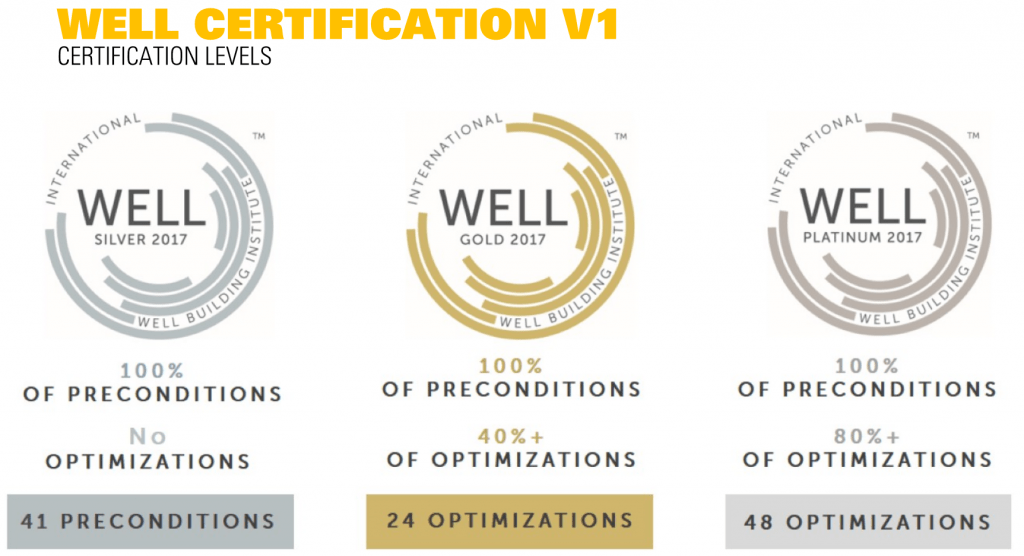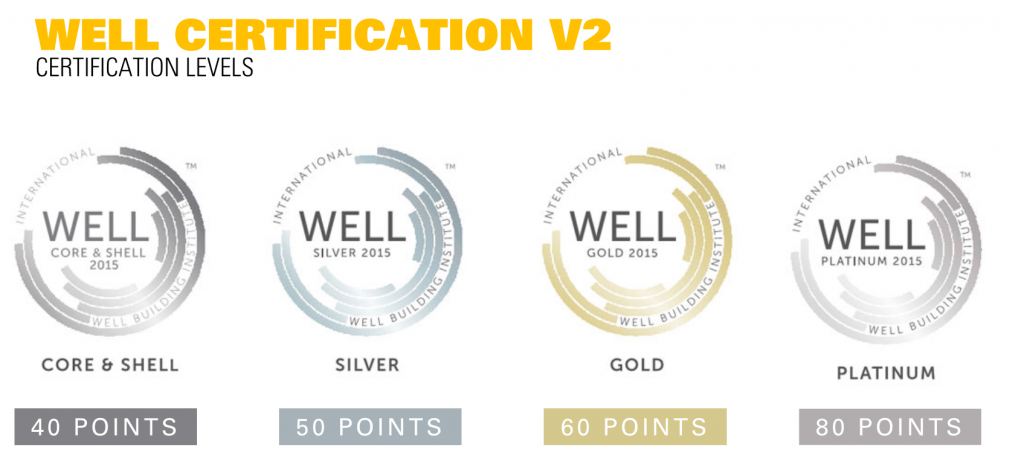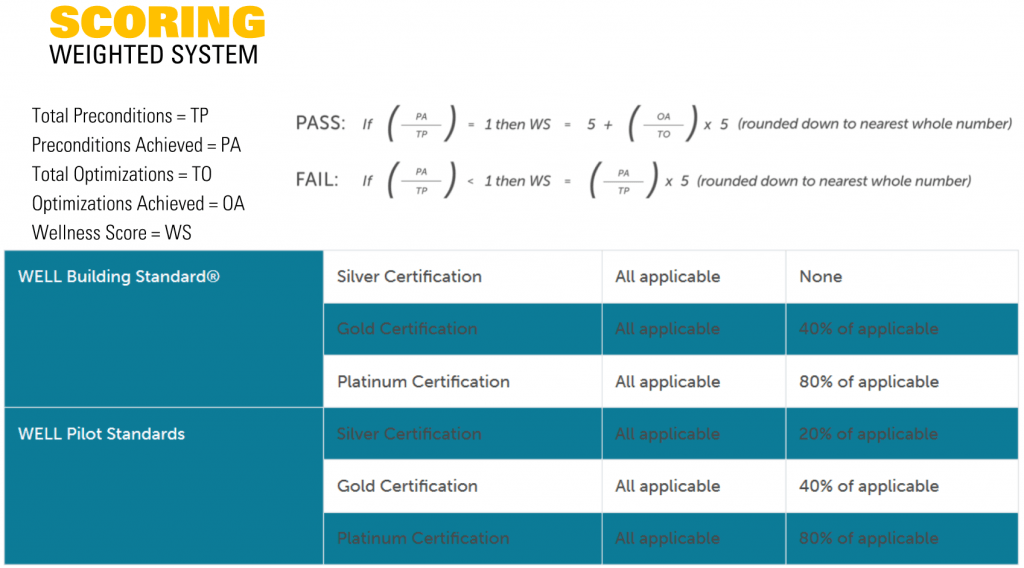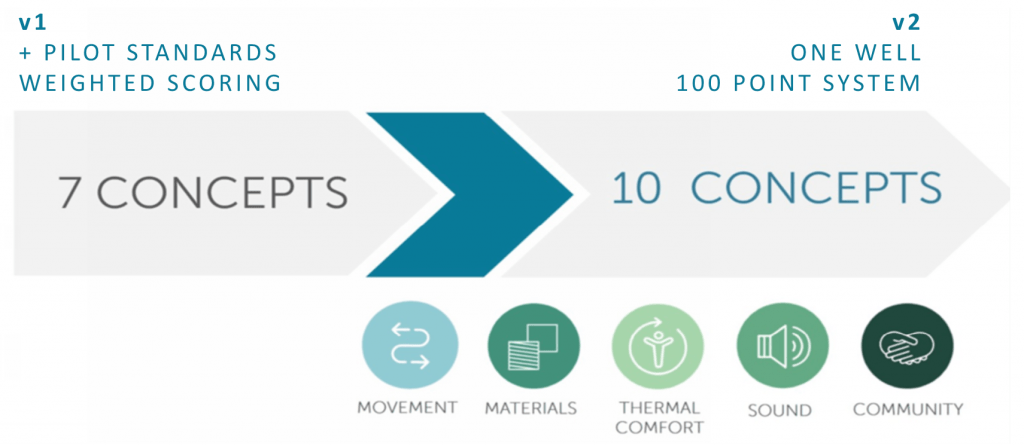Today I want to talk about the difference between The WELL Building Standard version 1 and version 2 – at least, some of the high-level information.
To start off, let’s discuss the points involved with the two versions:
In v1, the scale is weighted, and based on 100-105 points (5 points being Innovation, similar to LEED), while in v2, the points are based on a standard scale of 100.


The weighted system of v1 can seem a bit complicated at first – the formula itself can look pretty daunting – but this method allows for project teams to determine if a feature is applicable or not, which determines if it should be weighted in the final calculation.

For example, if you were doing a WELL certified office space, and the client was not going to provide food or beverage on-site on a daily basis (like free lunches, purchasable food, vending machines) then many of the nourishment features would be considered “not applicable” and the weight of the total points on your project would vary. This can be tricky, though. You cannot go through the Standard and simply call out features as being “not applicable” because you could not achieve them. A great example of this would be v1: 19 Operable Windows or v2: A07 Operable Windows. Just because your office can’t open the windows, doesn’t mean it’s “not applicable”. IWBI sees this as a missed opportunity. Why didn’t the client consider a building that you could open the windows?
Version 2 points are a bit different. You may hear WELL APs and WELL Faculty say that v2 is sort of like a “choose your own adventure”. Within each feature, there are options you can pursue to meet it, depending on your project type (commercial, education, multi-family housing, etc.). And, while v1 considered all features as a single point with its weighted system, v2 will have a range in points for each feature depending on the impact it has to human health (sort of like how LEED has a range of points for each credit). But, in the end, this newer version is a “hit it, or miss it” approach.

Get involved:
Would you prefer a weighted single-point system or a standard point-based system?
What else do you want to know about the WELL Building Standard?
